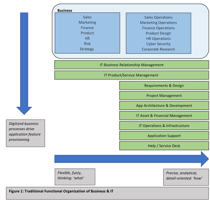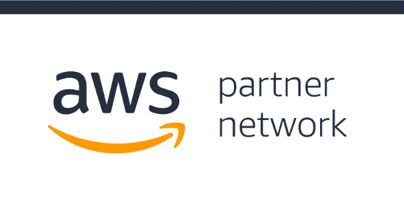The organizational design of the IT department in most firms was based on the ‘not invented here’...
How The Cloud Changes Our IT Model Of The Future
Many years ago (about 20 now!), I proclaimed that IT simply had to adopt a more rigorous relationship between supply (Technology solutions) and demand (Business needs). I instituted a strategy at one of the largest global financial companies that we simply called RTI – Real Time Infrastructure. The intent was to take us on a journey to operate IT in a different fashion by considering and relating 3 different data sources: BUSINESS, also known as the DEMAND (policies and data associated with users, application, clients, risk, revenue, etc.), ASSET, also known as SUPPLY (of capabilities and costs associated with people, processes and technologies that were potentially available to satisfy ‘the business’) and OPERATIONAL, the glue between supply and demand (what is needed, when its needed, the current usage, and the future demand). The effectiveness of the glue being the operational ability to adjust the supply change to meet the demands of the business priorities at any given time.
The problem with this model way back then was not the ability to predict the workloads of the demand, nor to model the technology needs that corresponded to those demands (although oddly enough, this discipline does appear to have become more challenging these days). No, the problem was how to acquire timely IT resources when and only when I needed them to cater for that demand. Virtual technologies managed through enhanced service management and provisioning automation aided in this quest to overcome this problem as we could now coexist workloads and pool our resources, potentially prioritizing some workloads over others. That said, we still had a finite number of resources that we needed to manage and optimize capacity utilization. Traditionally we had to have the time and foresight to buy what was needed way ahead of time to ensure it was deployed and integrated prior to the business need. Not a huge deal if your business growth is linear each month as you can plan to deploy to accommodate your growth strategy many times per year with limited waste. This situation is nearly always exacerbated by seasonal business peaks (e.g., holiday sales, college enrollment, election management, etc.) where there is need to add significant additional capacity but for very limited time periods.
The CLOUD changes the supply chain by providing a totally different paradigm to the equation: infinite (at least for most consumers) resources. A wonderful thing…. if:
- You understand your projected usage
- You understand your unit cost and cost options
- You govern the use, not to be totally restrictive, but to establish common sense policies and meet compliance requirements
- You set expectations with everyone about the changing roles and controls
- You define your IT operational strategy and understand how the cloud fits as one of your capabilities
Without the consideration and action of these efforts, and a defined journey and roadmap, you may find the outcomes of the cloud somewhat less than the business deserves




